
Starting a restaurant business is a fulfilling yet challenging endeavour that must be prepared for with a proper business plan. Many entrepreneurs who embark in this journey tend to have difficulties in writing down their plans, but this is what this article is for. This will serve as a collection of business plan guidelines with the sole purpose of helping you turn your dreams into reality.
Restaurant Description

To get things off the ground, you need to know your restaurant inside and out. Taking note of the various aspects and details can help you better plan things out. After all, if you don’t have a clue about what you’re building from the ground up, you wouldn’t be able to come up with things like your mission statement. Written below are the aspects of your restaurant that you need to be clear with:
-
Type of Business
One of the first things you need to decide is what type of restaurant you’ll be setting up. Is it a fast food chain? Perhaps a fancy restaurant? Maybe a cafe? Deciding this is one of the most important initial decisions to make as it will be the foundation of all other decisions in the future.
-
Location
Location is an important factor for any business and restaurants are no exceptions. You need to cite your chosen location in your business plan and why it makes the best sense for you to be there. Foot traffic, convenience, its relation to your restaurant’s theme, and more ought to be outlined here.
-
Branding
This part will be dedicated to how your brand is to be presented to your customers. It is the message you send, but the core quality would be your products and services. The consistent delivery of excellence is always a great message to send and it will say a lot about your brand.
-
Concept
Part of coming up with a business plan is the exploration and outlining of concepts and themes you may have in mind. This is the creative side of the business which makes everything so interesting, so be as specific and realistic as you can about what you plan to put out there and how it is to be done.
-
Menu
This can go hand-in-hand with the type of restaurant and your chosen themes. You’re likely to change things up as you progress, but it is still important to specify the dishes of your initial menu template. State their prices, what their names are, and how you intend to present them to your customers.
-
Investment
The funding and investment of others in your restaurant must also be outlined in your business plan. Take note of the specific amount and if that is not possible, then at least write the amount range of the initial investment. Having a clear idea of the resources available to you can help in various stages of operating a restaurant.
-
Interior Design
Describe the physical aspect of your restaurant with details such as the space you have, the decors, your equipment, and more. Take into account the space when deciding on the placement of tables, chairs, counters, and the like. Equipment like your refrigerator, the stove, your inventory, must also be noted down. Feature your chosen colors, your logo, and the unique designs you have in mind prominently.
Market Analysis

No strategic marketing plan would be complete without a thorough market analysis. Here is where you break down and analysis both your customers and your competition. It is crucial to continuously define and learn from both as you expand your restaurant’s success rate more and more over the years.
-
Target Market
When it comes to your target market, you must first identify and define them through several factors. This includes their age groups, educational attainment, income level, cultural background, location, and so much more. In doing so, you get a clearer idea of their wants and needs.
-
Competitive Analysis
Starting off your competitive analysis by asking certain questions is often the right way to go. Ask about the nature of your competitors, their specific services, their innate strengths and weaknesses, among various others. One easy method to compare your business to your competitors’ is known as a competition grid. This is done by writing down the names of products and services that can compete with you on the left side of a piece of paper. At the top, list down the characteristics of each one. Such a technique can help you see just where your business fits within the market overall.
Management

This is what holds everything together in a restaurant business. Before you go about constructing your management policy, you must first differentiate the two primary parts. There is the front of the house management and then there’s the back of the house management. Here’s a quick look at their respective responsibilities and how you can successfully run either one of them.
-
Front of the House Management
When it comes to dealing with areas that are exposed to customers, the front of the house management has that covered. Among the responsibilities is making sure that customers’ first impressions are positive ones. This means not only creating an ambience that is welcoming and satisfactory, but also ensuring that the place is tidy and organized.
-
Back of the House Management
This is the department that deals with the behind the scenes part of running a restaurant. Here the chefs prepare the dishes, expense tracking is done, employee performance review is done, among others. Restaurant owners will be handling several of these responsibilities, although a few from the front of the house management will also need their attention.
Operations
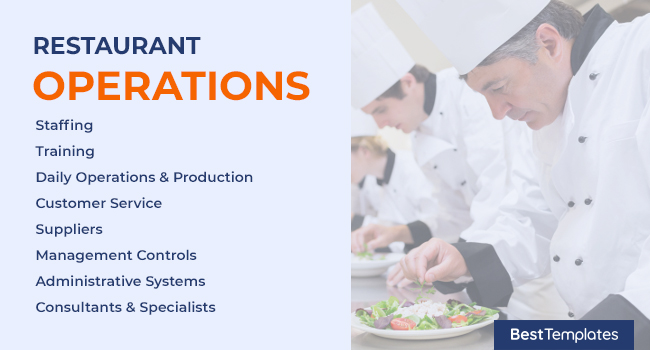
There are considerable things to take note of when it comes to operations. It’s varied nature means having to look into your POS system, working on operations and management spreadsheets, managing employees, and more. Here is a specific breakdown of the areas that will require your constant attention, in one way or another:
-
Staffing
There are different things to take into account when hiring staff. For cooks, the most significant factor to look into would be their experience and level of training. The wait staff must be capable of fast movements and multitasking. Although it is considered entry-level, dishwashers are among the most important. For them, it pays to be nicer and more generous since you wouldn’t want them to suddenly walk away from their highly stressful work.
-
Training
Before you focus on the training, you must first ensure that you’ve got the right people for the job. They must meet the necessary standards in abilities, experiences, and personality traits for their work. Once that’s done, they have to be exposed to your structured plan. Provide your staff with achievable and measurable goals. This way, you can better monitor what they need to learn, what to work on better, and where they naturally shine.
-
Daily Operations & Production
As the restaurant owner, your responsibilities extend to working with employees, dealing with customers, financial planning, sanitation maintenance, and production upkeep. It is not a requirement, but a background in hospitality and business administration can help in these areas. Juggling the day to day responsibilities will also involve proper delegation of tasks besides the preferable competence in all other areas.
-
Customer Service
One of the first things to remember is that the customer is always right. Although it doesn’t have to be interpreted literally, it is a saying that embodies a mindset when dealing with customers. Remain sympathetic and understanding to whatever concerns they may have. Also take any feedback they may have into consideration; the satisfaction that they’ve been listened to is bound to enhance their perception of your restaurant.
-
Suppliers
When dealing with suppliers, it is important to take note of factors that mean the most to you. This could be about the payment terms, the quality, the pricing, the delivery schedule, and the transport of packing. Look for a supplier who is capable of accommodating your needs. As you deal with prospective suppliers, you may end up having to compromise on certain things. The key then is to decide what is or is not acceptable in negotiations.
-
Management Controls
One thing to keep in the back of your mind is the potential occurrence of employee fraud and theft. Establishing internal management control can involve written policies procedures, monitoring systems, and active supervision. When it comes to financial control, tech such as accounting softwares, point-of-sale registers, and the like are also going to come in handy. Concerning inventory, it is advisable to check for damaged containers and seeing if the items delivered matches what was ordered.
-
Administrative Systems
Concerning administrative systems, the best thing to have is excellent communication across virtually all departments. Teamwork is also something that is crucial to the consistent delivery of high quality service. Concentrated efforts to foster both can charge up your restaurant, hopefully ending with a culture of unity and premium performances on everybody’s part.
-
Consultants & Specialists
When in need of help, you can always reach out to certain specialists or consultants. They’ll be able to provide you with their unique brand of wisdom, knowledge, and overall guidance. Just be sure to have a definable and measurable goal in mind. Another thing to look out for would be to receive a quote for the service, as well as the expected time the work is going to take.
Financial Projections

The development of your financial projections, both in the short-term and long-term, will depend on various things at your disposal. This will include your cash handling policy, budget plan, income worksheet, and so much more. To be even more clear, here are the specifics of what you need to project for your restaurant:
-
Sales Projections
The projection of your sales is critical to your business because it can help you understand just how profitable your restaurant concept is. With these projections, you’d also be able to estimate how much to spend and what your spending priorities should be on. You can base these sales projections on three factors:
-
Logistics
This involves how many customers your restaurant can feasibly serve at any given time depending on the size of your physical space.
-
Market
This talks about the overall market. Questions will include if your guests are of the repeat customers variety or will you be able to attract new ones; if your restaurant is answering a certain demand in the market; if there is major competition around, and so much more.
-
Population
This asks the question of what the max number of customers can you serve in any given day. Normally, this is determined through demographic research.
-
Expense Projections
Forecasting your operating expenses comes from looking at the restaurant’s recurring costs. This includes your sales and marketing, your general and administrative costs, and your market research. Getting a good idea of how much you’ll be spending can go a long way in making sure your general budget is on point.
-
Capital Budget
This is the process that helps you determine just how viable your long-term investments are concerning your restaurant’s projects. As a business owner, there are a few techniques that you can resort to, and these are:
-
Payback Period
This measures the time which your initial cash flow is earned back by your project.
-
Accounting Rate of Return
This calculates your project’s profitability by the total net income projected, divided by your average or initial investment.
-
Net Present Value
This is equal to your initial cash outflow, minus the sum of your discounted cash inflows.
-
Internal Rate of Return
This refers to the discount rate where your project’s net present value turns to zero.
-
Profitability Index
Otherwise known as the ‘PI,’ this involves your project’s ratio of present value for its future cash flows.
-
Income & Cash Flow
Start things off with your annual operating budget. From there, cite your anticipated income for each month. Once that’s done, go for the monthly expenditures so that you can arrive at the cash flow worksheet. To ensure that everything remains effective, you need to update your projections at a monthly basis.
Advertising & Marketing

Making sure that your restaurant is well known to potential customers is why so much effort is put into advertising and marketing. In today’s world, there is a myriad of methods that entrepreneurs can employ and the more innovative you are, the better. Ready your social media Marketing plan, your marketing promotion tracking, and others. Here’s what you can do for your business as far as ads and marketing are concerned.
-
Methods to Promote
In today’s business climate, there are two primary ways you can advertise and promote. One, is through online means. The other is through traditional, offline methods. Online marketing involves the use of email, social media platforms, search engines, and the like. If your restaurant has a Facebook or Instagram page, you can easily post a status update or a picture of a brand new dish to entice customers both current and prospective. You can reach out to consumers through their emails, give promotions and discounts, all without having to leave your desk.
Traditional methods, on the other hand, remains the same as it always has been. You can have staff hand out flyers to customers as they enter or leave your restaurant. TV or radio ads are still viable, if somewhat outdated, options. Newspapers aren’t unheard of as an advertising medium either. Despite all that, one of the better methods to promote is through word of mouth. Create an excellent enough experience for your customers and they’ll be sure to talk about it to their friends, families, co-workers, and others.
-
How are you Going to Target Your Audience
One way for you to target your audience is through the creation of a buyer persona. The greater detail you put into this, the higher your chances of targeting a specific audience as your brand strategies play out. Another way to target audiences is through the use of email and online surveys. This way, you can keep yourself updated with your consumer’s thoughts and opinions about your product and service.
Tips for Writing a Business Plan

When it comes to actually writing down your plans, there can still be some tips that ensures a greater quality output. You may have gathered all the information related to your endeavor, but putting them all together is still a whole new ball game. Here are things that you should keep in mind as you write down your business plan:
-
Keep it Short
Nobody wants to read a wall of text. As much as possible, you should make sure that your writing is both clear and concise. Get straight to the point and include only what is necessary. Keep in mind that people tend to have little patience when it comes to reading. The shorter it is, the easier it will be to attract people and make them understand what you’ve got planned.
-
Know your Audience
You’ve done a lot of research into your own business by now; know that doing the same for your audience is going to yield just as much positive results. Realizing who you are writing for can do absolute wonders for your writing, since your knowledge will serve as a guideline for what you should or shouldn’t do.
-
Don’t be Intimidated
Your entrepreneurial journey will be difficult and daunting, but letting fear and intimidation get to you is defeat from the get go. Console yourself with the acquisition of as much knowledge and wisdom as you can. Believe that what you’ve written is right and in the event that it isn’t, open your mind to constructive criticism and strive for ways to improve.
-
Understand the Competition
You can do a lot worse than making sure you have a thorough understanding of what you are up against. Learning how your competition conducts business is the first phase in adapting and countering them.
-
Focus on the Opportunity
As an entrepreneur, you carve out opportunities as opposed to waiting for them to pop up. When all else gives you doubt, remember what made you want to take the risk in the first place. Focus on all the opportunities you’ve had thus far and it will give you the necessary kick and drive to keep going and succeed.
-
Summarise your Ideas
This goes hand in hand with keeping things short. Unless you’re divulging actual details and specifics, it is best to just write down summaries of ideas. Anything that is theoretical or abstract at this point should be written in a minimal manner.
-
Ensure all Key Areas are Covered in Business
To top it all off, just because you’re keeping things short and summarizing doesn’t mean you can keep anything important uncovered. If nothing else, ensure that your business’ key areas are all covered. Miss or neglect one and you’ve got a serious flaw in your hands.
7 Business Plan Templates for all Restaurant Needs

One last thing to tackle would be the different templates that you may need. Since each situation is different, it pays to know which business plan template is best suited for you. Here are seven samples that you may want to take into consideration.
-
Restaurant Business Plan

Include your concept, a sample menu, what type of service you’ll be getting into, how you plan to run your service team, the design, and many more. This ought to be the one Business plan you know best.
-
Business Plan to Get a Loan

With this type of business plan, all necessary financial information is needed. This includes your profit and loss statements, bank statements, and balance sheets. You can opt to write your pro forma statement yourself or get an accountant to do that for you.
-
Restaurant Business Plan for Investors
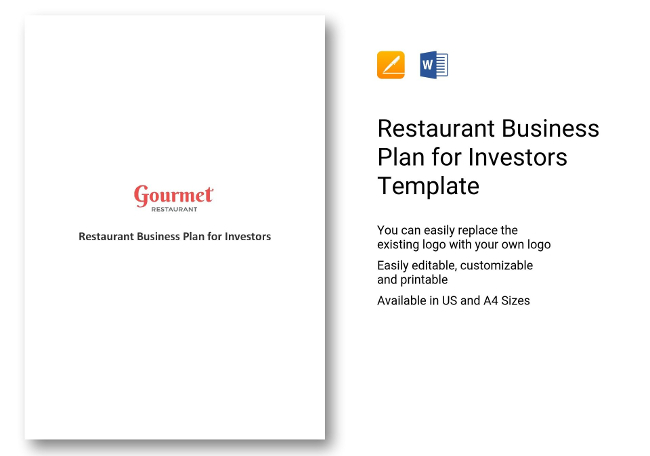
As it concerns business plans for investors, you need to ensure that what you’ve got is 100% complete. Leave nothing out, especially the most important components. By doing so, you further guarantee that investors will be more attracted to your plans, increasing the odds of you acquiring funding from them.
-
Restaurant Business Plan for Landlord
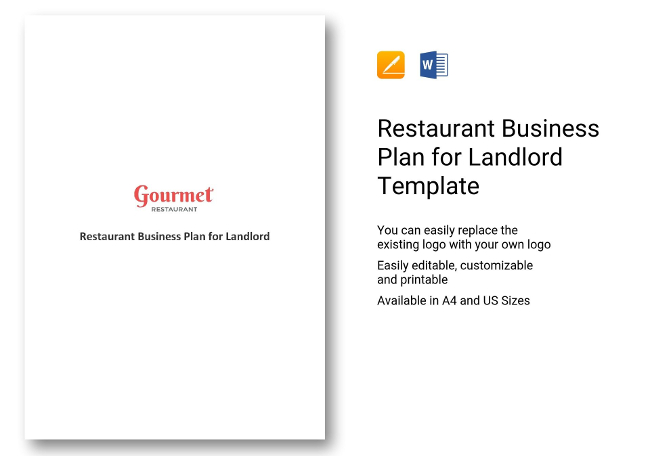
A restaurant business plan for a landlord should include an explanation for your interest in a certain property. Market research data also needs to be included, particularly data that shows why your plans for the space is viable. Spell out your lease terms, renewal options, as well as how you are able to finance the lease payments.
-
Franchise Business Plan Template

Franchising means knowing your budget and doing extensive research on the certain franchise you mean to take on. These are the two things your business plan will center around. There will be interview processes where you’ll have to smooth over any specifics with the franchisor. Adjustments may be made to your plan in such cases.
-
Banquet Hall Marketing Plan
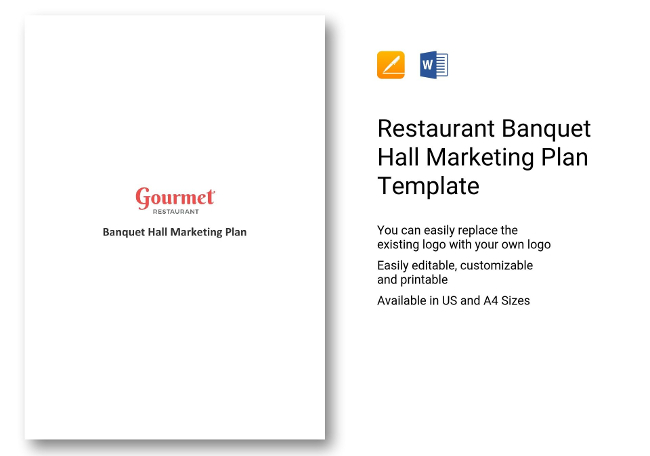
Since banquet halls are often leased for the hosting of seminars, weddings, award ceremonies, and the like, all of this must be indicated in the business plan template. You can expect things like budgets optimizing monthly leases or mortgage expenses in these plans.
-
Food Delivery Business Plan
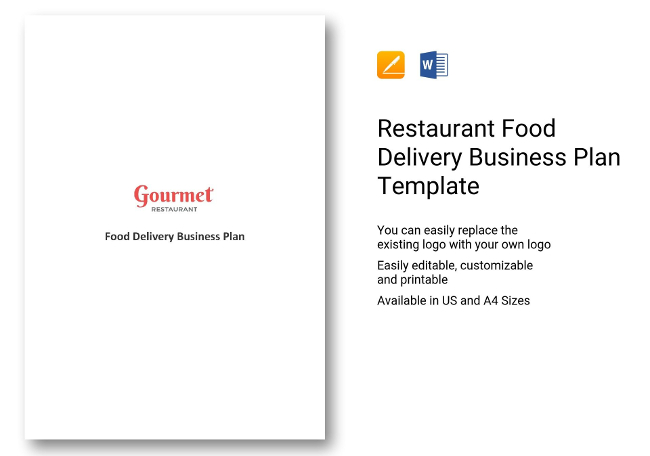
Creating this type of plan depends on the type of food delivery business you have in mind. If you are more of a highly organized and local business, you would need a more standardized process. When going for a general health food delivery, innovation is key. Should diet meals be what you’re going after, then highlighting the responsibilities involved is best.
As you can see, there’s a lot to take in when it comes to creating a restaurant business proposal. There can be a lot to prepare for, but learning how to overcome restaurant crisis is just one hurdle on your entrepreneurial journey. So take those tips to run a successful restaurant at heart and you should be more than fine in this undertaking. In wrapping this up, you are now one step closer to achieving your goals as a restaurant owner.
